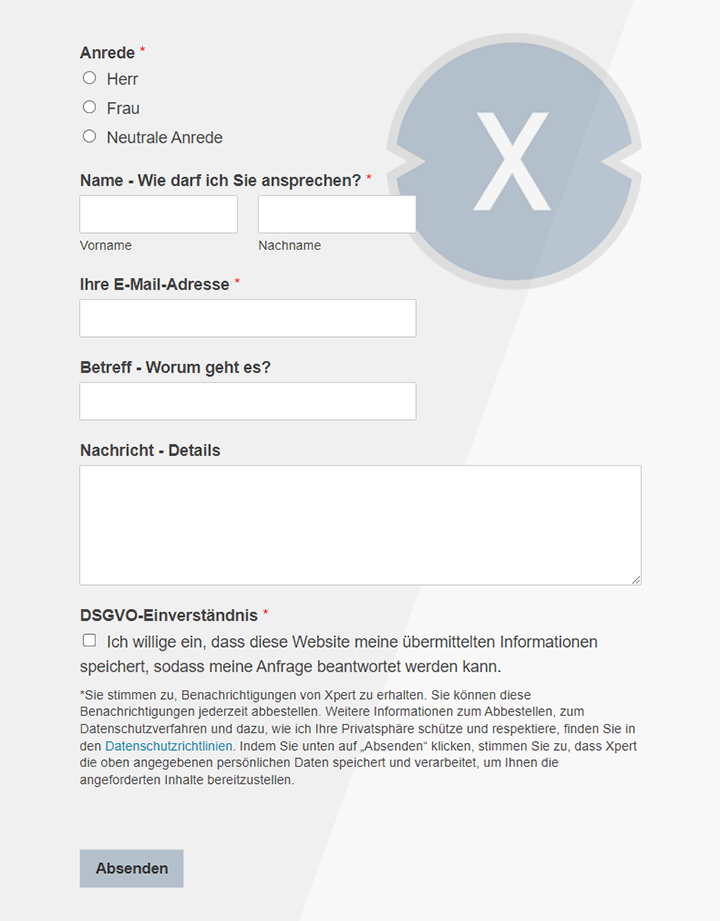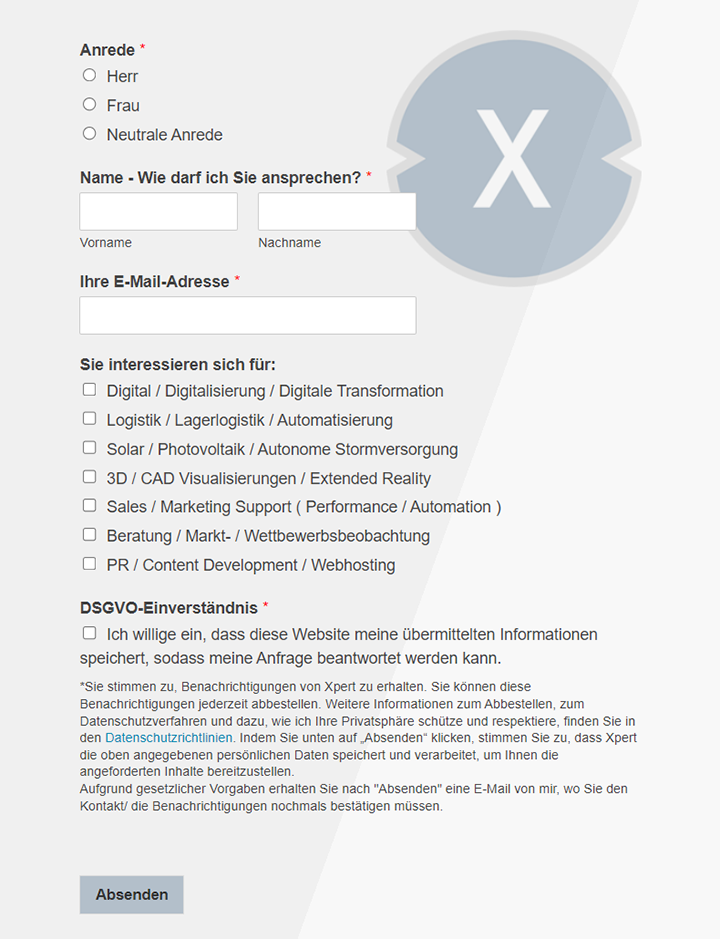Climate neutrality for companies? How do I start? – Set corporate responsibility, sustainability goals and climate goals
Language selection 📢
Published on: June 4, 2024 / update from: June 4, 2024 - Author: Konrad Wolfenstein
🌍🌿 climate neutrality for companies: the guide for the entry into sustainability and environmental responsibility
🎯 Sustainable business practice is now not just an ethical must, but decisive for the long -term success of a company. The demand for climate neutrality is growing, and companies worldwide recognize the importance of taking proactive steps to reduce their ecological footprint. But how do you start this crucial change? This guide helps you to take the first steps to make your company climate -neutral, set sustainability goals and take on entrepreneurial responsibility.
🌱 What does climate neutrality mean?
Climate neutrality means that a company reduces its greenhouse gas emissions to zero or neutralizes through emission compensation. This includes the minimization of greenhouse gases released by business, production, transport or other activities, and compensation in unavoidable emissions by investing in climate -protecting projects.
📊 The first step: inventory of the actual situation
Before a company can start implementing climate goals, a detailed analysis of the current stand is necessary. A greenhouse gas-related inventory, often known as CO2 footprint, forms the basis. Determine all of your emissions, from direct emissions through your own sources (SCOPE 1) to indirect emissions through purchased energy (SCOPE 2) and other indirect emissions along the value chain (SCOPE 3).
🧮 Creation of a climate balance
A comprehensive climate balance tool helps to calculate the company's entire CO2 emissions. Every emission source is recorded and quantitatively rated. This enables you to identify the largest emission sources and to focus on those areas that have the greatest influence.
🎯 Setting ambitious but realistic goals
After the inventory and analysis of the data, clear climate goals should be determined. These goals should include both short -term and long -term milestones. For example, short -term goals can include the reduction of specific emissions within one to three years, while long -term goals strive to transition to complete climate neutrality within ten to twenty years.
📈 Integration of climate goals into the corporate strategy
For successful and sustainable changes, climate goals must be an integral part of the corporate strategy. This requires support for managers and the provision of necessary resources. Company -wide communication of the goals and progress is essential to promote transparency and strengthen motivation within the employees.
⚙️ Implementation of measures to reduce emissions
As soon as the goals are set, the company should take measures to reduce emissions. These can be varied, such as:
1. Energy efficiency
Introduction of energy -saving measures and technologies, optimization of production processes and improved thermal insulation.
2. Renewable energy
Swing down to renewable energy sources such as wind or solar energy.
3. Sustainable purchase
Preferred supplier and partners who also operate sustainably.
4. Reduction of waste and recycling
Introduction or improvement of recycling programs and updating the waste disposal strategies.
🌳 Investments in climate -protecting projects
Not all emissions can be completely eliminated. Therefore, it makes sense to invest in projects that contribute to the reduction or absorption of CO2. These can include reforestation projects, investments in renewable energies or the promotion of technologies for CO2 separation and storage (CCS).
👥 Integration of the employees
The inclusion of employees in the climate strategy is crucial for success. Training and workshops can raise awareness of sustainability and convey practical tips for reducing emissions in everyday work. Employees should be encouraged to contribute their own ideas and suggestions to improve the company's ecological performance.
🔍 monitoring and reporting
Continuous surveillance and reporting are necessary to evaluate progress and, if necessary, adapt measures. Regular review of the climate balance and the measures carried out help to check the effectiveness of the strategy and to make necessary corrections. Transparent communication about progress and challenges towards stakeholders increases the credibility and trust in the company's climate strategy.
🤝 Cooperation and partnerships
Cooperation with other companies, industry associations and NGOs can offer valuable support in the implementation of climate goals. Exchange of best practices, participation in joint projects and bundling resources can facilitate and accelerate the process.
🏆 examples of success and incentives
The setting of incentives and visible make success motivates and promotes commitment. Companies can introduce internal competitions or awards for environmentally friendly initiatives and ideas. Public parts of success stories at the same time strengthen the reputation and is considered a model for other companies.
🚀 long -term vision and continuous improvement
Climate neutrality is not a unique goal, but an ongoing process of constant improvement. It is about establishing a culture of sustainability in which ecological awareness and responsible action are deeply anchored in the corporate DNA. This requires a long -term vision and the endeavor to continuously get better.
The way to climate neutrality requires many steps and commitment at all levels of the company. It begins with a thorough analysis and inventory, sets clear and accessible goals, integrates them into the corporate strategy and actively involves all employees. Continuous monitoring, reporting and cooperation with other actors can minimize the climate effect and create a sustainable company model. Ultimately, these efforts not only contribute to the protection of our planet, but also strengthen competitiveness and reputation of the company in an increasingly environmentally conscious society.
📣 Similar topics
- 🌍 The way to climate neutrality: first steps and inventory
- 📈 Integration of climate goals into the corporate strategy
- 🧮 Creation of a comprehensive climate balance
- 🌳 Investments in climate -protecting projects
- ⚙️ Implementation of measures to reduce emissions
- 🎯 Definition of realistic and ambitious climate goals
- 🤝 Cooperation and partnerships for more climate protection
- 👥 integrate employees: the key to success
- 🔍 monitoring and reporting: measure and communicate progress
- 🏆 Success examples and incentives for climate -neutral companies
#️⃣ hashtags: #climate neutrality #sustainability #company strategy #emission reducing #UMWELLWARM
📌 Other suitable topics
🎯🎯🎯 Benefit from Xpert.Digital's extensive, fivefold expertise in a comprehensive service package | R&D, XR, PR & SEM

AI & XR 3D Rendering Machine: Fivefold expertise from Xpert.Digital in a comprehensive service package, R&D XR, PR & SEM - Image: Xpert.Digital
Xpert.Digital has in-depth knowledge of various industries. This allows us to develop tailor-made strategies that are tailored precisely to the requirements and challenges of your specific market segment. By continually analyzing market trends and following industry developments, we can act with foresight and offer innovative solutions. Through the combination of experience and knowledge, we generate added value and give our customers a decisive competitive advantage.
More about it here:
🌍🏡 Climate neutrality: The climate target in Norway is a CO2-neutral building stock until 2050

CO2-neutral building “Powerhouse Telemark”-photographer: Sindre Ellingsen / right of use: Schüco International KG
Norway's climate protection goals are ambitious. The aim is to have an almost CO2-neutral building stock by 2050. A groundbreaking impetus for the decarbonization of new office buildings is the “Powerhouse Telemark,” which offsets its carbon footprint over the entire life cycle. The innovative facade solution is of central importance.
More about it here:
🌍 What climate neutrality means and why it is important for companies
🌱 climate neutrality is a central topic of our time and is constantly becoming increasingly important in the global discussion about the environment and sustainability. But what exactly is behind this term and why is it so important for companies to act climate -neutral?
🌿 Definition of climate neutrality
Climate neutrality means that an organization, a company or a nation reduce or compare its CO2 emissions to zero. The goal is to minimize the net emissions of greenhouse gases in such a way that no additional climate changes are caused. This can be achieved through a combination of measures: by reducing direct emissions, the compensation of unavoidable emissions by climate protection projects such as reforestation or the use of technologies, remove CO2 from the atmosphere.
🔥 The global urgency of climate change
Climate change is one of the greatest challenges in front of which humanity faces. Scientists have warned of the serious consequences of global warming for decades: extreme weather events, rising sea levels, loss of biodiversity and drastic effects on human health and economy. In order to combat this threat, 195 countries in the Paris Agreement of 2015 have undertaken to limit global warming to well below 2 degrees Celsius compared to the pre -industrial level, with efforts to restrict warming to 1.5 degrees.
🏢 The role of companies
Companies play a crucial role in the fight against climate change. They are both large causes of greenhouse gas emissions and key players in the implementation of solutions. The switch to climate -neutral processes can not only help reduce ecological footprint, but also offers economic and social advantages.
🌟 Advantages for companies
1. Image and brand value
Consumers are becoming increasingly environmentally conscious and prefer brands that actively work for climate protection. A company that is committed to sustainability and climate neutrality can improve its image and gain the trust of its customers.
2. Competitive advantage
Companies that switch to climate -neutral technologies and processes at an early stage can position themselves as pioneers and obtain a competitive advantage. These companies can stand out from the competition and take on a pioneering role.
3. Regulation and compliance
Governments worldwide are increasingly introducing environmental regulations. Due to the early adaptation to these regulations, companies are punished and can even benefit from government funding programs.
4. Cost reduction
Sustainable practices such as energy efficiency measures and the use of renewable energies can reduce costs in the long term. Investments in green technologies often lead to savings in energy and resources.
🚀 Strategies to achieve climate neutrality
1. Energy management
The first step towards climate neutrality is a detailed recording and analysis of energy consumption. Companies should implement measures to reduce energy consumption and increase energy efficiency. This can include the introduction of energy management systems, optimization of production processes and the use of energy -efficient devices.
2. Renewable energy
The switch from fossil fuels to renewable energy sources such as wind, solar or hydropower is an essential factor. Companies can build their own systems for energy generation or receive renewable energies directly from providers.
3. Compensation of residual emissions
Not all emissions can be avoided completely. It is therefore important to compensate for inevitable emissions through investments in climate protection projects. Such projects could include the afforestation, the financing of renewable energy projects or the support of energy efficiency measures in developing countries.
4. Sustainable supply chain
The reduction of CO2 emissions in the entire supply chain is crucial. Companies should work closely with their suppliers to promote sustainable practices and choose low -emission alternatives.
5. Innovations and technologies
The continuous research and development of new technologies plays a crucial role. Companies should invest in innovations that help reduce the CO2 footprint. This could affect the development of low -emission production processes, the use of carbon separation technologies or the improvement of energy efficiency.
🌍 social responsibility and ethical dimension
Climate neutrality is not only an ecological, but also a social and ethical obligation. Companies have responsibility to act more sustainably not only towards their shareholders, but also to society and future generations. The effects of climate change affect vulnerable population groups in developing countries in particular. By acting in a climate -neutral manner, they contribute to global justice and help to improve people's quality of life.
🎉 Case studies of successful implementation
Many companies worldwide have already implemented successful strategies for climate neutrality and act as role models:
The Body Shop
- The cosmetics brand has undertaken to be climate -neutral by 2025. You work on the reduction of your CO2 emissions through energy savings and investments in renewable energies and support projects for afforestation and biodiversity.
Patagonia
-This outdoor brand is known for your environmentally friendly initiatives. They have set themselves the goal of becoming climate -neutral by 2025 by switching their entire supply chain to sustainable and low -emission processes.
IKEA
- The furniture giant has undertaken to reach a climate -neutral value chain by 2030. This includes reducing emissions in the production, the use of renewable energies and the creation of products that make the life of customers more sustainable.
🌏 Designing a sustainable future
Climate neutrality is more than just a fashionable catchphrase; It is a necessary step towards a sustainable and just future. Companies that take this responsibility seriously can not only contribute to solving one of the most pressing problems of our time, but also gain economic advantages and a positive brand image. The path to climate neutrality requires commitment, investments and innovative approaches, but the rewards - for companies and society as a whole - are immense. It is time for companies to recognize their role in the fight against climate change and become active. Today's action will determine the world of tomorrow.
📣 Similar topics
- 🌱 What is climate neutrality and why it is important
- 🌍 The urgency of climate change and global measures
- 🏢 The role of companies in the fight against climate change
- 🌟 climate neutrality as a competitive advantage for companies
- 🚀 Strategies to achieve climate neutrality in the company
- 🎯 Energy management and renewable energies in focus
- 🌿 Compensation of residual emissions and sustainable supply chains
- 💡 Innovations and technologies for a climate -neutral future
- 🌏 Social responsibility and ethical dimension of climate neutrality
- 🎉 Case studies: successful examples of climate -neutral companies
#️⃣ hashtags: #climate neutrality #company responsibility #sustainability #Energie efficiency #umweltschutz
- Warehouses, production halls and industrial halls with their own power source from a photovoltaic roof system - Image: NavinTar|Shutterstock.com
- Industrial plant with its own power source from an outdoor photovoltaic system - Image: Peteri|Shutterstock.com
- Plan solar systems with photovoltaic solutions for freight forwarding and contract logistics
- B2B solar systems and photovoltaic solutions & advice
- Plan photovoltaics for warehouses, commercial halls and industrial halls
- Industrial plant: Plan a photovoltaic open-air system or open-space system
- Plan solar systems with photovoltaic solutions for freight forwarding and contract logistics
- B2B solar systems and photovoltaic solutions & advice
We are there for you - advice - planning - implementation - project management
☑️ SME support in strategy, consulting, planning and implementation
☑️ Creation or realignment of the digital strategy and digitalization
☑️ Expansion and optimization of international sales processes
☑️ Global & Digital B2B trading platforms
☑️ Pioneer Business Development
I would be happy to serve as your personal advisor.
You can contact me by filling out the contact form below or simply call me on +49 89 89 674 804 (Munich) .
I'm looking forward to our joint project.
Xpert.Digital - Konrad Wolfenstein
Xpert.Digital is a hub for industry with a focus on digitalization, mechanical engineering, logistics/intralogistics and photovoltaics.
With our 360° business development solution, we support well-known companies from new business to after sales.
Market intelligence, smarketing, marketing automation, content development, PR, mail campaigns, personalized social media and lead nurturing are part of our digital tools.
You can find out more at: www.xpert.digital - www.xpert.solar - www.xpert.plus




































